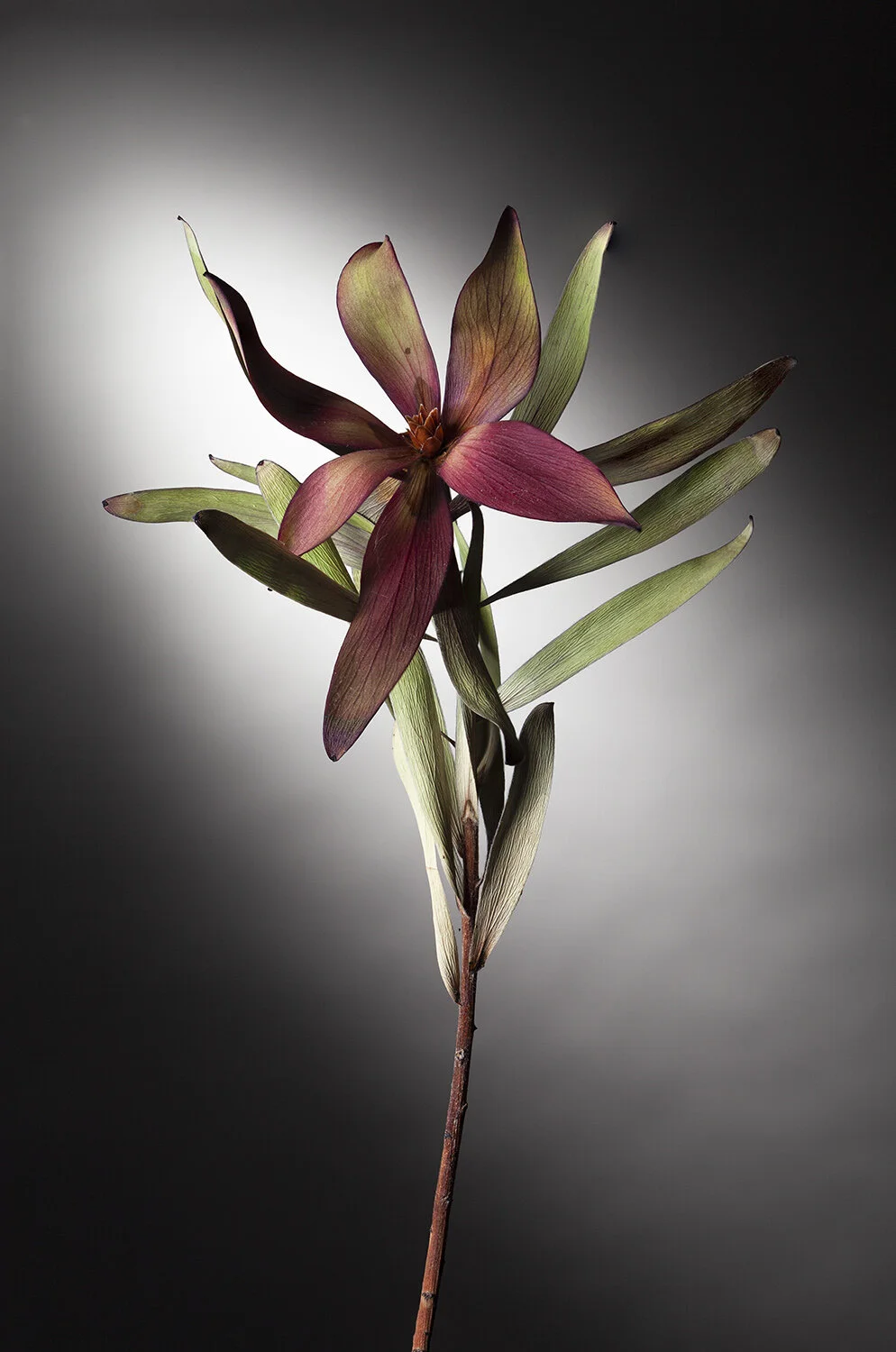Richard Wotton
Richard Wotton
PhotoForum Member Portfolio, July 2020
Richard Wotton was born in 1946 in Whanganui, New Zealand, where he still lives. A printer by training, his interest in photography began in 1967.
Apart from a brief excursion into colour in the early 1980s, Wotton worked almost exclusively in black and white until the late 1980s. The last four years of this period were devoted mostly to photographing both exterior and interior vernacular architecture, before a 20-year break from personal photography.
From 2009 to 2013 he again photographed vernacular architecture before spending two years concentrating on a series of portraits of tattooed people. Since the conclusion of that project he has been working on another portrait series and the ongoing Flora Series, colour images of plants in varying stages of life and death.
Wotton has had solo exhibitions at Exposures Gallery, Wellington; Real Pictures Gallery, Auckland; WHMilbank Gallery, Whanganui; Te Manawa, Palmerston North; MTG Hawke’s Bay; the Sarjeant Gallery, Whanganui; The Rabbit Room, Napier; and Poynton Studio, Auckland. His work has also been included in group shows at the Sarjeant Gallery, Te Manawa, The Dowse Art Museum and Te Papa.
Wotton’s personal work is held in a number of private collections around New Zealand and also in the collections of the Christchurch Art Gallery, Te Manawa, MTG, Te Papa and the Sarjeant Gallery, which has a large holding of his works.
rwotton@xtra.co.nz
These links will take you to more of Richard’s work:
https://collection.sarjeant.org.nz/persons/8809/richard-wotton
RICHARD WOTTON: Selected images from The Flora Series
Richard Wotton's Flora Series photographs are intuitive; they tap into a collective consciousness of visual harmony with a sense of beauty from unexpected perspectives. They are reminiscent of botanical specimen drawings from the Age of Exploration during the Renaissance period, but I also feel they are philosophical in nature, much like the shift in conscious thought during the Age of Enlightenment in the late 17th to 19th centuries. At the same time, they also differ from those connections and have a contemporary element that relates to the present. Whereas the first European artists to study the flora of this country were viewing what was already here, the passage of time, and technological advancement, has enabled Wotton to record with his camera plants introduced by those early visitors and colonists. In different senses of the word, both those early artists and the 21st century photographer were viewing and recording the exotic.
Wotton is exploring his immediate environment (unlike the ventures into new, distant lands by the explorers) and he is not particularly focusing on native plants. Instead, he is mainly selecting foreign specimens, plants that have arrived since European settlers made their new homes here in New Zealand. This is the intriguing juxtaposition that separates Wotton’s flora photographs from the drawings of the explorers and also from the work of other photographers who are using them as subject matter. When I look at Wotton’s photos of flora, a shift occurs in my conscious thought about plants and nature. I can no longer only view them through my own female gaze because I must also consider them through another perspective: that is, through the eyes of an older man. I am drawn to the moment when he chooses to immortalize those specimens in a still photographic frame.
Wotton’s relationship to the plants he chooses is a point of difference and not one that is shallow or predictable. He doesn’t just see the prettiness or follow rules of arrangement, and he is not looking heavily into symbolism or justifying his choice through subjective concepts. Wotton is concerned with a documentation of time; he looks at the elegance in principles related to formal design elements. He is choosing the composition very carefully, considering the shapes, textures and natural variances in repetition, as well as the particular stage of colour of his floral specimens. This should not be ignored by viewers as it is integral to understanding the beauty of these images.
A lot of Wotton’s plant choices are invasive pests, such as his convolvulus images, but they are still intoxicating to view under his careful eye. They are alluring and magnetic. They are objectively beautiful inside a subjective frame; they are engaging, without clever titles or explanatory blurbs.
Sometimes when I look at other images in his vast series, I can easily form narratives, seeing shapes in them that relate to the creatures that feed on the seeds or nectar, but at other times they seem very alien and strange, even though they are common plants found in many gardens.
It is the stage of decomposition at which Wotton chooses to photograph his subject matter that makes me consider life in full bloom compared to the beauty in the skeletons of botany; those tantalizing textures in the withered skin of the petals, the veins of the stalk all showing a historical time-lapse of the plant feeding on nutrients from the surroundings. To me, it's as though he sometimes performs a botanical autopsy, but one not nearly as grim as those performed with flesh! Wotton’s Flora Series is a delicate dance of life, from full bloom through to the bittersweet end. It's all the little things in between that he chooses to reveal for us that matter most in these exquisitely printed photographs.
Angela Tier, June 2020









